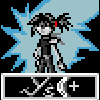Players complain alot. Anything they don't like, or think they won't like, or once heard someone else say that they might not like, they'll complain about.
Good game designs sometimes include things that players won't like. "If I touch a goomba, I die? That's LAME!"
But hey, Mario is very fun. And successful.
Also, it could just be a vocal minority. One game designer gave the analogy of standing in an empty room, with all the players on the other side of a wall. The game designer hears complaints about this and that, but whenever he looks into the other room, what he actually sees is some players complaining, and everyone else silently and happily playing. If you listen to the complaints from the 10% of your players complaining, you need to also make sure you listen to the lack of complaints from the 90% who don't have a problem with it.
I'd say, use your intelligence as a designer to think it through. "Do I think it'll actually benefit the game?", then implement it, test it, tweak it, have someone else test it, polish it and release it. If the community complains, let them! Wait two weeks. See how it has actually affected the community and actually changed the gameplay.
Don't let the community dictate your designs, or you'll get design-by-committee, which ain't good. Your game needs a cohesive design, not a piecemeal design catering to a hundred different people's personal whims and wishlists. If new players come to the game with the feature already inplace, and they hate it, then give a bit more weight to the complaints.
Another designer once said, "Ask players what they want, and they'll give you a laundry list of last year's popular features.". As a designer, you need to know where you are taking your game, and be willing to make decisions that might not be popular, to create a game that is cohesive, polished, and meets your design goals.








